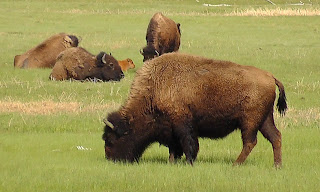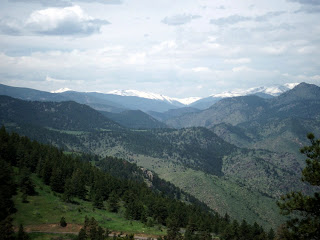Monday/Tuesday 10th-1th June
Before leaving William, we stopped off at the depot of the
William-Grand Canyon Railway. Here,
before the departure of every train, they stage a shoot out between three baddies
and the sheriff. Needless to say, the
sheriff won. We then went South to Oak
Tree Canyon, yet another enormous gash in the edge of the Kaibab Plateau. Reaching Sedona the temperature had climbed
to near 1000F, an we had opted for a ride in the desert in some very
tasty pink jeeps! It was hot, slightly
dusty and very bumpy but the seating was very soft and comfortable – just hang on!
Onward to Phoenix but first a stop at Montezuma’s Castle,
neither a castle nor anything to do with Montezuma, but and old Indian village
built into a cliff overhang beside a river, built about 700 AD, abandoned about
1350.
Finally, the Scottsdale Hilton
and time for a quick swim (1040F) before going to a farewell dinner
at Rustler’s Roost, a western-themed beer and beef restaurant. Good Country and Western music and some of
the party amazed the group with very 60’s rock and roll. Time for a stroll around Scottsdale’s historic
centre before lunch at the Fashion Mall (Arndale – eat your heart out) and then
an additional four hour’s delay at Phoenix Sky Harbor airport.
We covered 3265 miles. It was advertised as “Awesome” and there was awe at
least three or four times each day. The
whole trip was a delight, made particularly so by a good crowd (no one lost or
injured), a smooth and safe driver, Kelly, and a brilliant Tour Manager,
Rob. While we shall be processing photos
and videos for weeks to come, the memories will be unforgettable.






































